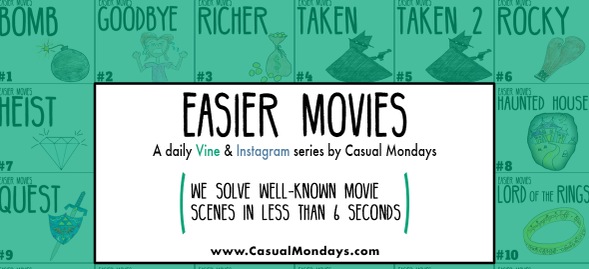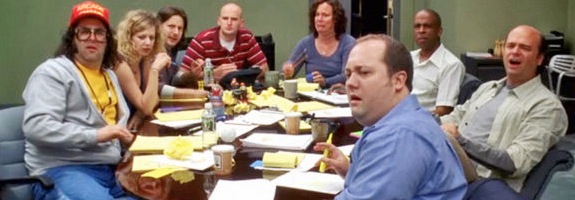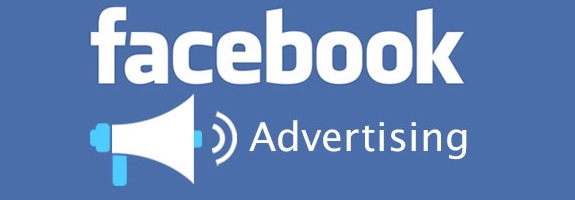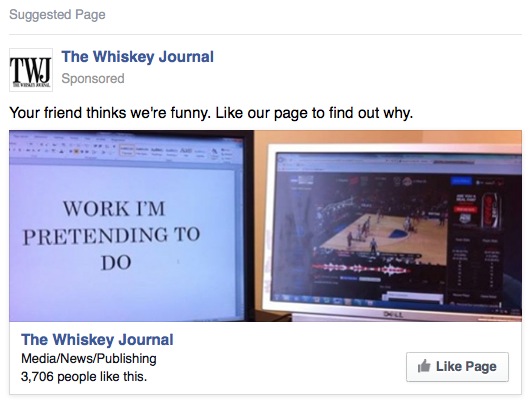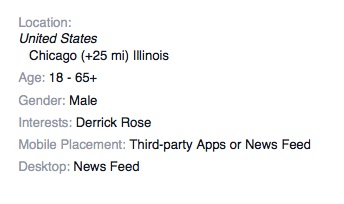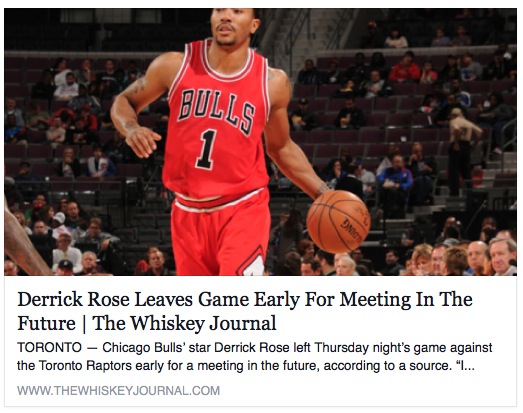The following is part of my Case Study series of articles in which I offer specific advice to a Connected Comedy VIP member based on their personal goals. If you’re interested in being the subject of a Case Study article, email me.
Connected Comedy VIP member Rick March is a corporate comedian who recently reached out and asked what advice I’d have for him to improve his website. Following are my suggestions to Rick, which in most cases are applicable to any comic interested in getting corporate bookings and also is relevant to non-corporate comedians hoping to improve their websites as well.
Clarify Your Branding
The first thing that jumps out at me on your site is that it’s confusing what exactly the site represents. Is it a company site or your personal site?
There’s a lot of mixed messaging going on and that’s a big issue – especially when you’re trying to get companies to trust you enough to book you.
Clarity and transparency builds trust, confusion creates doubt.
The domain and header say Best Corporate Comedy which makes it sound like a company site, but surfing around the site makes it feel like the “company” is really just you – and that occasionally you bring in other comics as needed for particular gigs.
I could be wrong, but I assume your core business is not a booking agency, but rather this site is about getting yourself booked and occasionally including other comics as needed.
I think it’s important to think through whether you want your site to convey that you’re a booking company or revolve around getting yourself booked. Whichever you choose, focus the messaging consistently around that concept.
Assuming this is more about getting bookings for yourself than others, then the site should represent that. You want people to know Rick March, you want them to book you, and then secondary would be references to your ability to do group shows, etc.
Keep in mind that people like to know who they’re getting into business with – they want to know the person, not the company. The more they feel like they know who you are, the more likely they are to trust you, and as a result the more likely they are to book you – or hire you to book others for them.
The other thing that happens when a person tries to make their “company” seem like it’s bigger than just them is it can come off as a little sketchy. People pick up on when an individual is trying to make it seem like their company is more than it is and it leads them to question the transaction.
On the flipside, complete transparency will increase their trust in who they’re dealing with and that you’ll deliver on what you promise.
I’m going to make one other assumption here. I’m guessing some of this (the domain name for example) is being driven by an SEO (search engine optimization) strategy – you assume that certain keywords will help you get found in Google search by potential clients.
That’s ok, though in general SEO is a little overrated and likely won’t help you as much as you think it might in this case, but it’s still important to understand that even if you get somebody to the site via search, you are then going to have to build enough trust for them to convert to a potential customer.
So even if you keep the generic domain name as opposed to something like RickMarch.com, I’d still recommend having the site emphasize who you are as opposed to it feeling like a company site.
Every Word Counts
Little things make big differences when it comes to websites. In your case, there are several words used for different sections of the site that are a little misleading, confusing, or could be improved.
For example, your navigation menu has a page titled “Custom Comedy,” but it’s not clear what that actually is. In looking at the page, I think what you mean is that you have different kinds of shows you can do and/or that you can customize material to match the type of company that hires you. But I’m not sure people will get that from the Custom Comedy name.
Instead, you might want to call that page something like “Show Options,” “Choose Your Show,” or even “How It Works.” Try to think about it from the perspective of somebody who knows nothing about how the comedy business works and use the kinds of phrases they would have in their head.
I’d also recommend you have a paragraph at the top of that page that introduces the broader idea that clients can choose from several types of shows and get a custom performance to fit their needs. Then, you could lay out the various options.
You also might want to add a breakdown of the different benefits of each type of show and what makes each a good fit for different clients needs.
It’s also a little strange that you have a separate Roasts page in the navigation menu, but also on the Custom Comedy page. I’d recommend either putting all of the various shows you offer in your navigation and having a separate page for each, or moving all the Roast stuff to the page with the other shows.
Another example of word choice is on your Media page where you have a “Highlights” section. That section basically consists of just photos, which aren’t really highlights. If somebody wants to see highlights, they expect to see videos – photos don’t really tell them anything of value about your service other than maybe you’ve performed in front of crowds.
Anticipate (And Answer) People’s Questions
One page that isn’t on your site but would probably be a good addition is a Frequently Asked Questions page.
Again, keep in mind that the visitors to your website are (hopefully) there because they’re considering booking a comic for their corporate event. You want to use your site to provide as much relevant information to them as possible, and a great way to do that is create a simple page that answers all the common questions you anticipate they might have.
Everything from how much does it cost to book a comic, to what kind of material can they expect, to how long a typical show lasts, to a bunch of other common questions you get could easily be answered by you and put on the site. All of that information will build trust and move visitors closer to actually contacting you about a potential booking.
As far as cost goes, you don’t have to list the price you charge specifically, but you can list the factors that go into your rate – length of performance, location, number of comics booked, etc. – and encourage people to contact you for a specific price quote.
Make It Easier For People To Contact You
The number one goal of your site is to get somebody to contact you about a booking, so you want to make it as easy as possible for them to do so.
But if you look at your current site, there’s no email address, no phone number, and the only way people can contact you is by filling out a form on your Contact page.
I’d recommend posting your email and phone number on the site on the home page, About page, and contact page at a minimum. You might want to put it at the bottom of every page for good measure. Again, remember the goal of what you want people to do and make it as easy as possible for them to do so.
You Need To Tell People Where You Work
Here’s a basic thing that’s super important and missing from your site. It doesn’t mention anywhere where you are based or (more importantly) where you are available to work.
If people come to your site, one of the first things they’re going to want to know is if you even work in their city/state, so it’s very important to make that information clear.
It’s fine to say you’ll take on gigs anywhere, but it’s worth pointing out where the core of your business is based. Somebody looking to book a show in Pennsylvania is going to be a lot more likely to contact somebody whose site says they regularly perform in Pennsylvania than somebody whose site doesn’t say where they perform.
On a separate note, I noticed your Twitter account also doesn’t say where you’re based so you should update that as well. You might want to improve your Twitter bio at the same time.
A More Targted Content Strategy
It’s great that you’ve got a blog section of your site and that you occasionally write posts for it, but there’s a simple way you can turn it into a much stronger asset for you.
Again, every decision you make on the site should be geared toward the audience you hope to attract. In this case your audience is people who are potentially interested in booking corporate comedy shows so you want to create content designed to appeal to them or catch their attention.
For example, here’s some ideas of posts that would speak directly to your desired audience and possibly even draw more of them to your site.
• Why Every HR Executive Should Book A Comedy Show To Help Employee Morale
• How A Comedy Show Can Help Drive More Sales
• 5 Ways A Comedy Show Can Change A Company’s Culture
• 10 Things I’ve Learned About Non-Profit Organization From Performing Benefits For Them
• How To Triple Your Fundraising This Year By Booking A Comedian
There’s a million different directions to go, but the idea is to focus the content directly at the audience you want to reach. You can also extend this same content strategy to your email newsletter and give people a reason to subscribe to it because you’re providing valuable insights to them beyond just promotional material.
READ THIS NEXT: The Best Audience For An Unknown Comedian To Connect With



